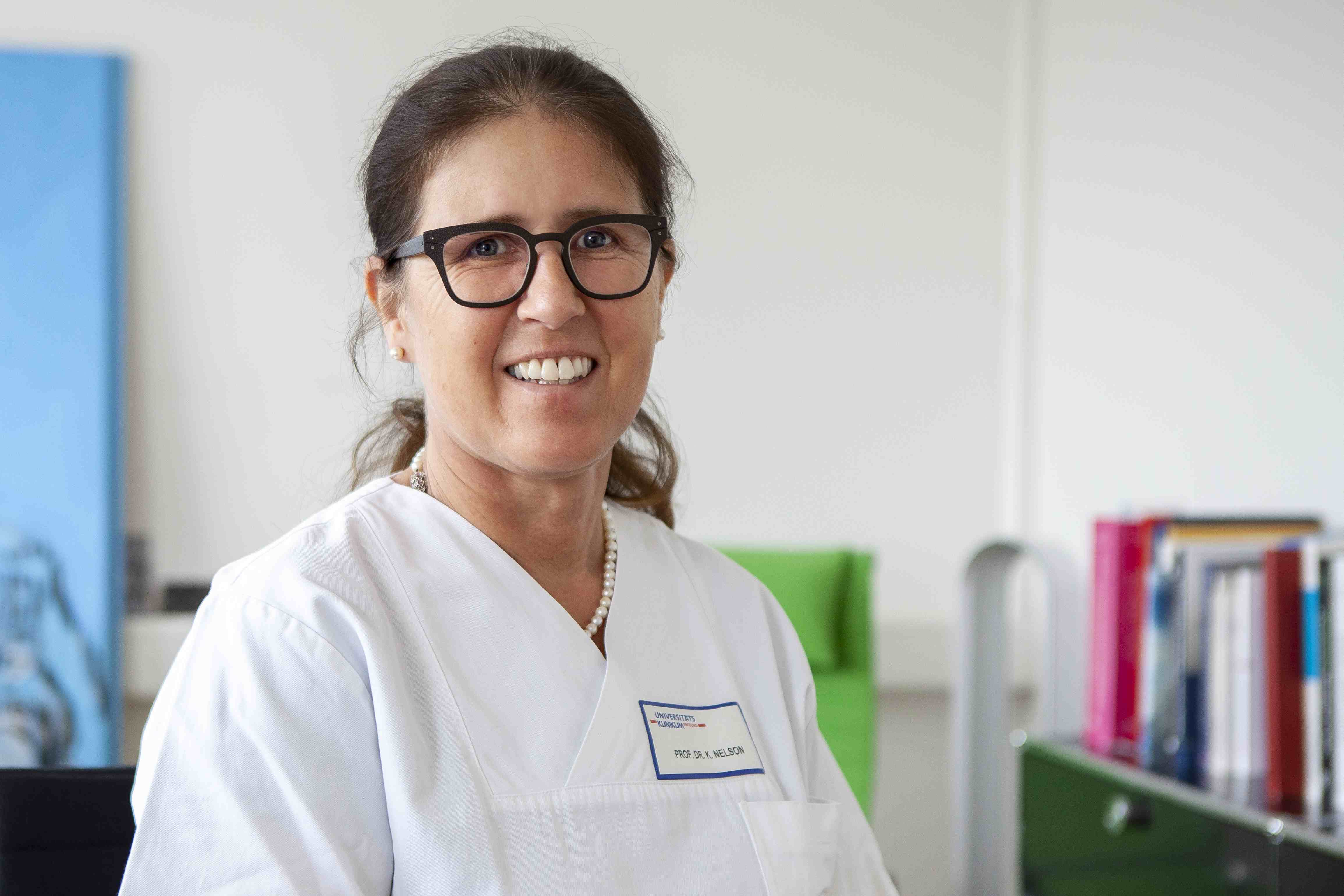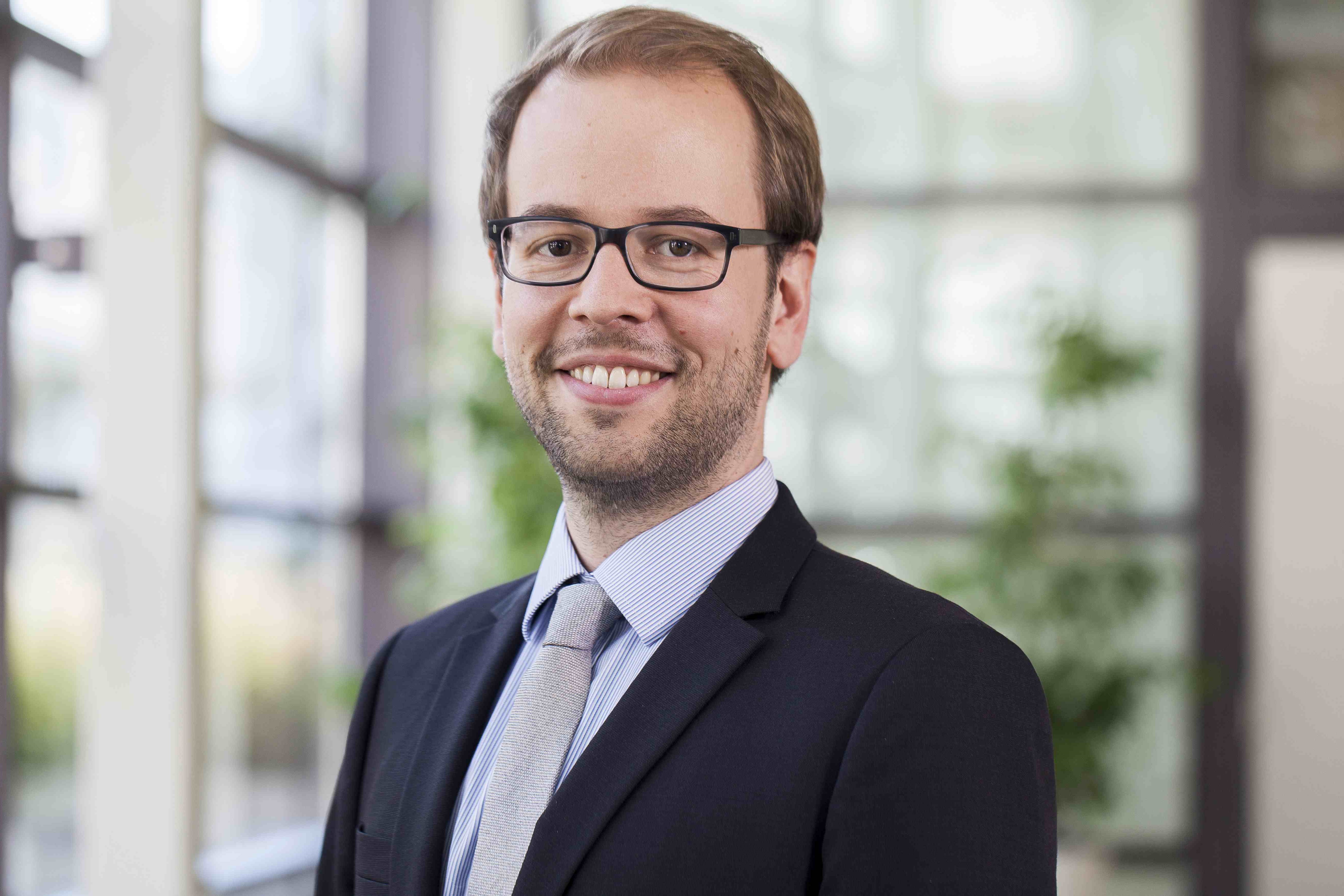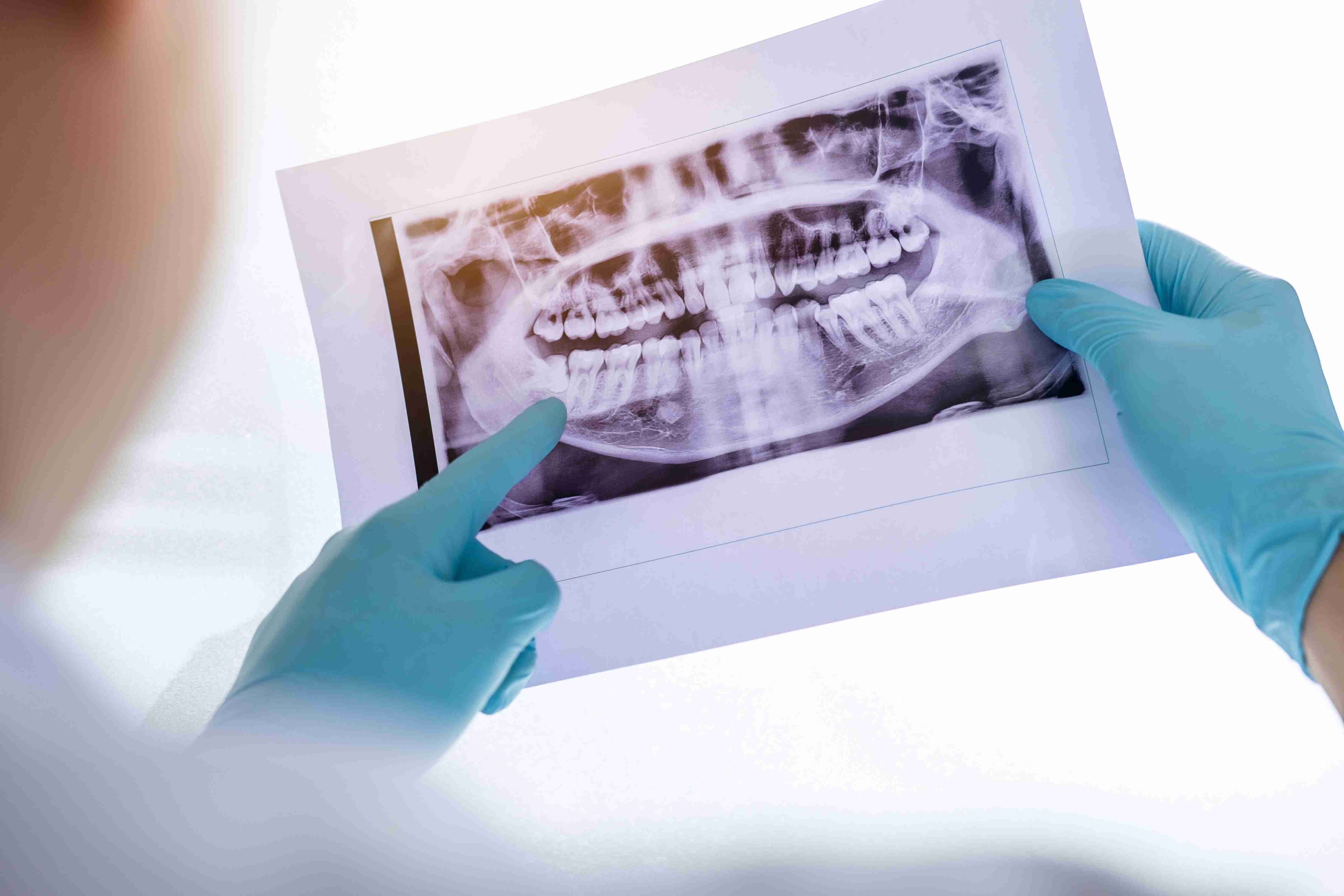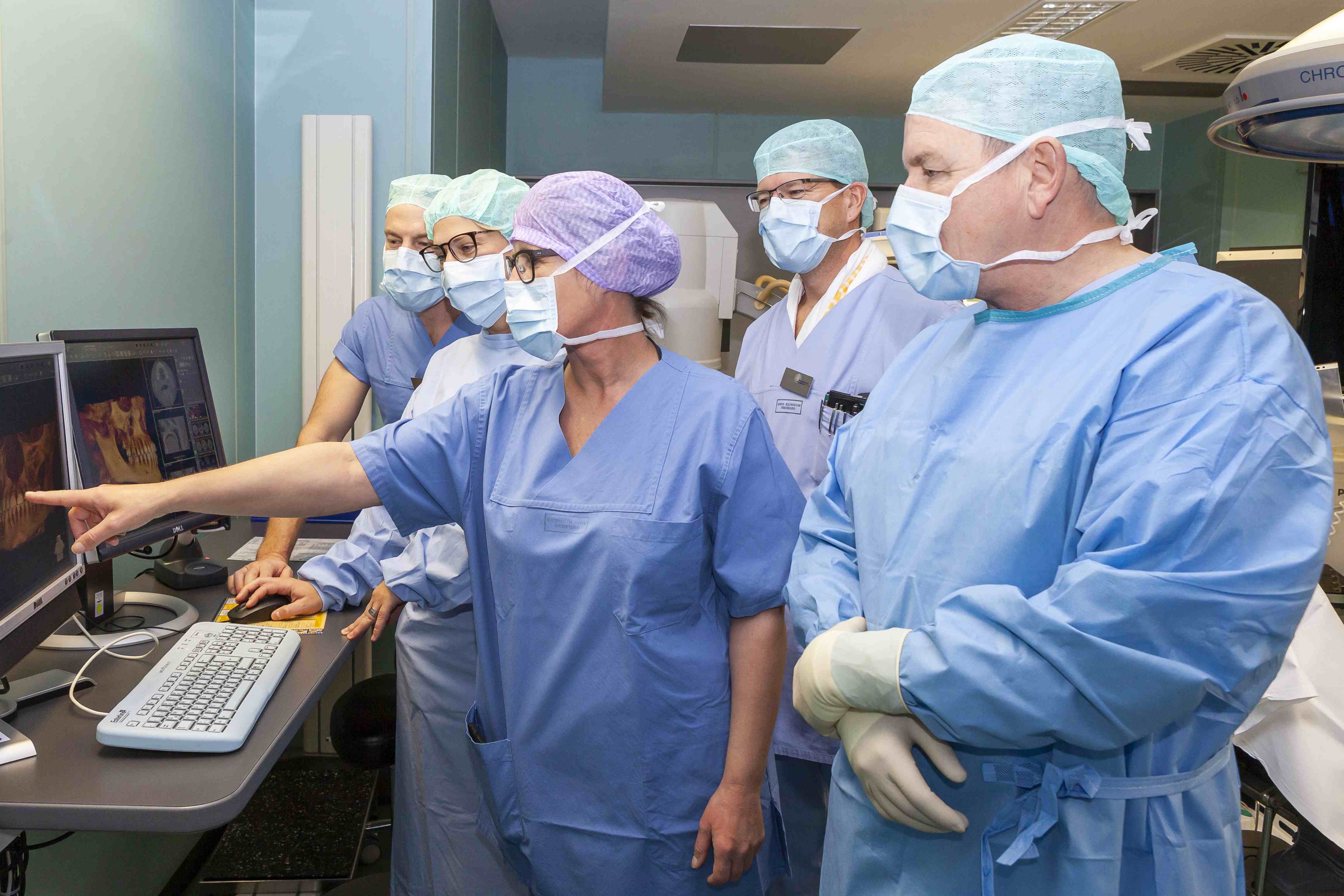Katja Nelson is Head of Translational Implantology at the University of Freiburg Medical Center. She is passionate about combining research, teaching and clinical work and has been conducting research on radiation-free imaging in dentistry for many years. In this interview with Jan Jeske, Group Manager »Quantum Magnetometry« at Fraunhofer IAF, she talks about how quantum technology could shape the future of dentistry.
In conversation with the dentist Katja Nelson
What will tomorrow's medical technology look like?
Prof. Nelson, have you already experienced a kind of revolution in your time as a dentist?
Nelson — Absolutely! That was the introduction of DVT – digital volume tomography. This technology allows dentists to perform 3D imaging diagnostics in their practice without having to refer to the radiologist every time.

How has diagnostics developed since then?
Nelson — X-rays are still one of the main technologies, which is not ideal for patients due to the radiation involved. I see magnetic resonance imaging as a very promising technology because it works without radiation and has been capable of imaging both soft and hard tissue for a couple of years now. So Fraunhofer IAF's research into quantum magnetometry for MRI is very interesting to us.
Jeske — We are working on the development of quantum sensors that could complement and improve MRI. In magnetometry in particular, they have the potential to deliver more precise measurements on the one hand and very high spatial resolution on the other. It is also conceivable that completely new technologies could be used to measure other specific atomic nuclei than water molecules.
How could Fraunhofer IAF pave a »way ahead« in dentistry?
Nelson — First of all, I would like to have radiation-free imaging with high resolution. The anatomy and the pathological processes involved with dentistry are in some cases so small that even CT is unable to cope with them. High spatial resolution and sensitivity also make it possible to search for other molecules. This would be a massive extension of indication in diagnostics. And as the next step, we need a technology that is suitable for daily use. This means that it does not require expensive helium cooling and is easy to incorporate in dental practices.
Jeske — Magnetic field measurements using diamond NV centers would be ideal here because they function at room temperature – i.e. without helium cooling. Our laser threshold magnetometer (LTM) could serve as a more precise sensor to measure weaker magnetic fields and thus resolve weaker signals. Another strategy would be to develop an innovative diamond polarizer to combine it with a biomolecule as a contrast agent. This is currently being investigated by the MetaboliQs project.

What other possibilities do quantum sensors offer?
Jeske — I hope that we can further improve and exploit the benefits of quantum sensors – i.e. their very high resolution, precision and operation at room temperature. This could for example enable more precise hand-held magnetic field sensors to detect the exact position of nerves. Measuring the stronger magnetic field signals instead of the electrical signals as we do with EEG and ECG would improve the characterization of brain and heart activities. And more precise technologies such as LTM it could become possible to replace claustrophobic MRI tubes with open devices and even offer MRI scans to people with metal implants or pacemakers.

What is decisive for a research result to find its way into application?
Nelson — For me it is the interdisciplinary team, because the bundled competences from all the divisions involved ultimately decide whether a development actually makes it into practice. You need clinicians, the end users of the technology, as well as basic scientists and people who think economically and have the necessary market knowledge. Not to forget the production managers, who can assess whether the technology can be mass-produced.
Jeske — The exchange between researchers and end users plays a decisive role. I also think it is important to give space to the exploration of new ideas. This is often more difficult than you think, because research projects usually have predefined goals and strict schedules, so you have to find time to pursue new ideas.

What is your vision for future dentistry?
Nelson — My vision is radiation-free, personalized and partially automated dentistry. So far, we still have to generate a lot of image data manually and then process it, which requires a lot of clinical know-how. Partly automated processes would make our day-to-day clinical work much easier.
What is your personal wish for the future?
Nelson — My dream is to see the introduction of MRI for dentistry. I feel like an ambassador and have been fighting to reach this goal for many years. At the University of Freiburg Medical Center we have already published many articles on how to use MRI in dentistry. The Fraunhofer institutes also have a very high level of expertise. If research succeeds in uniting the various disciplines and colleagues from all sectors, I will actually see a dental MRI reach the market. That would be a highlight in my professional career.
Jeske — That would be a real breakthrough! My most important goal currently is to develop a laser system that uses diamond NV centers as a medium and to use this signal to deliver more precise measurements. In the long run, I dream of being part of all the applications this kind of laser can deliver.
-----------------
Prof. Dr Katja Nelson holds the professorship for Translational Implantology, the first professorship of its kind, in Germany. She appreciates the quality of research, teaching and clinical work at the Faculty of Dentistry at the University Hospital of Freiburg and advocates for the development of MRI for dentistry.
Dr Jan Jeske theoretically developed the concept of the laser threshold magnetometer at RMIT University in Australia, and measured the first direct stimulated emission of NV centres in diamond, which is the basis of a laser. At Fraunhofer IAF, he and his junior research group now want to improve the material properties of diamond for this application and set up and characterize a first laser system.
 Fraunhofer Institute for Applied Solid State Physics IAF
Fraunhofer Institute for Applied Solid State Physics IAF